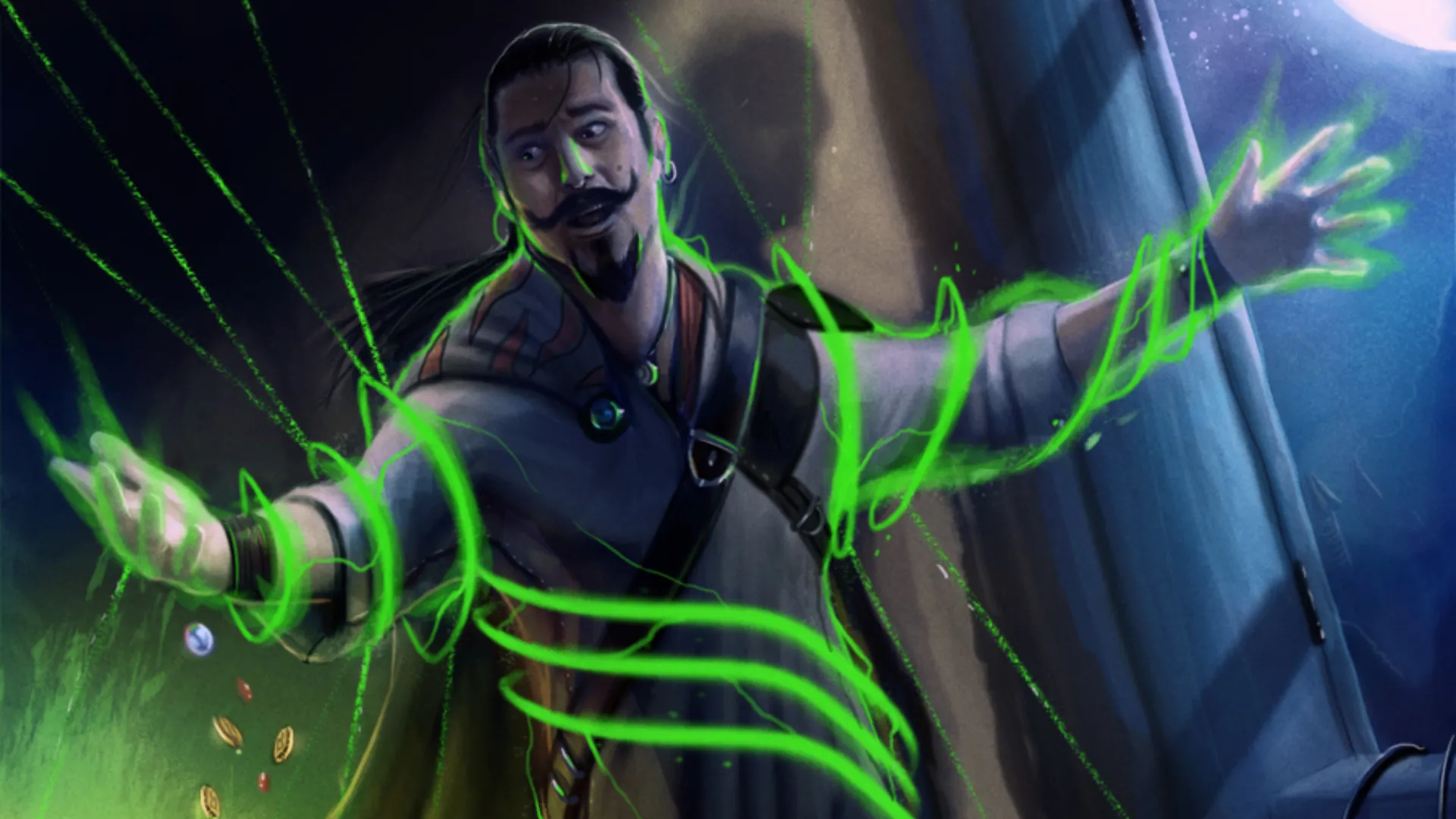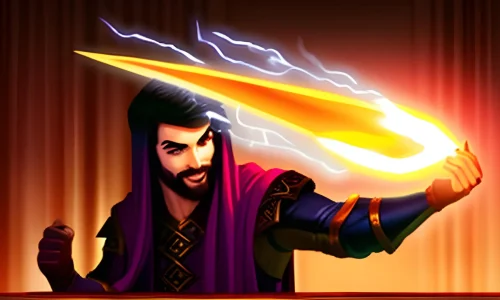Hold Person is a 2nd-level enchantment spell in D&D 5e that allows the caster to paralyze a humanoid target. The spell causes the target to become paralyzed and unable to take any actions or reactions for the duration of the spell.
The paralyzed condition ends if the target takes any damage or if another creature uses an action to shake the target out of its paralysis. Hold Person has a range of 60 feet and requires verbal and somatic components to cast.
Verbal components involve speaking a specific incantation, while somatic components involve making certain hand gestures. The caster must have a clear line of sight to the target in order to cast the spell.
Hold Person targets humanoids, which are creatures that have a humanoid shape, such as humans, elves, dwarves, orcs, and goblins. The spell does not affect creatures that are not humanoid, such as animals or monsters with non-humanoid forms.
The spell can target a single humanoid or up to two humanoids if cast using a spell slot of 3rd level or higher.
Mechanics of Hold Spell 5e
Hold Person is a 2nd-level enchantment spell that targets one or two humanoid creatures within 60 feet of the caster. Upon casting the spell, the target(s) must make a Wisdom saving throw.
Wisdom saving throw determines whether the target(s) succeed or fail in resisting the spell’s effects. If the target succeeds on the saving throw, the spell has no effect on them. If the target(s) fail the saving throw, they become paralyzed for the duration of the spell.
The duration of the Hold Person is concentration, up to one minute. While the spell is active, the caster must maintain concentration in order to keep the target(s) paralyzed.
The spell can be ended early if the caster loses concentration if the target(s) take damage, or if another creature uses an action to shake the target out of its paralysis.
How to use the Hold Person 5e spell effectively
Hold Person can be combined with other spells and abilities to maximize its effectiveness. For example, a sorcerer can use Twinned Spell to target two humanoids with Hold Person at once, or a rogue can use Sneak Attack to deal extra damage to a paralyzed target.
The tactics used for different types of enemies can also impact the effectiveness of the Hold Person. For example, Hold Person may be more effective against melee-focused enemies who rely on physical attacks, but less effective against spellcasters who can still cast spells while paralyzed.
Knowing the enemy’s weaknesses and strengths can help determine whether Hold Person is a good choice in a given situation.
Considerations for group dynamics and player strategies are also important when using Hold Person. – Hold Person can be a powerful tool in combat, but it’s important to consider how it fits into the overall strategy and the actions of other party members.
For example, if the party relies heavily on ranged attacks, it may be better to use spells that restrain enemies rather than paralyze them. Effective communication and collaboration among party members can help ensure that Hold Person is used to its full potential.
The Paralyzed Condition
The Paralyzed condition is a debilitating status effect that can be inflicted on a creature through various means, including the Hold Person spell. A paralyzed creature is incapacitated, which means it can’t take actions or reactions, and it also can’t move or speak.
Additionally, a paralyzed creature has several other restrictions:
- Attack rolls against the creature have an advantage.
- Any attack that hits the creature is a critical hit if the attacker is within 5 feet of the creature.
- The creature automatically fails Strength and Dexterity saving throws.
- The creature can’t move or speak.
The effects of the Paralyzed condition can be devastating, especially when combined with other spells or abilities that deal extra damage to incapacitated targets.
However, it’s important to note that not all spells or abilities that affect incapacitated targets will also affect paralyzed targets, and vice versa. For example, the Sleep spell affects incapacitated targets, but not paralyzed targets.
In order to end the Paralyzed condition, the creature must succeed on a saving throw against the effect that caused it. In the case of Hold Person, this means the creature must succeed on a Wisdom saving throw at the end of each of their turns while they are paralyzed.
Additionally, the Paralyzed condition can be removed by spells like Lesser Restoration or by certain class abilities.
Advantages and Disadvantages
| Advantages | Disadvantages |
|---|---|
| Paralyzes the target, preventing them from taking any actions or reactions for the duration of the spell | Targets must make a Wisdom saving throw, which they may succeed at and render the spell useless |
| Can immobilize a powerful enemy, giving the party an advantage in combat | Requires concentration to maintain the spell, leaving the caster vulnerable to interruption from attacks or other spells |
| Targets humanoids, which are common enemies in many campaigns | Targets must be humanoid, which may not always be the case in combat |
| Can be used on up to two targets if cast at a higher level, increasing its versatility | The spell can be broken if the target takes damage or if another creature uses an action to shake the target out of its paralysis |
| Only requires verbal and somatic components to cast, making it accessible to many spellcasters | The spell only affects one target per casting if not cast at a higher level, limiting its effectiveness against larger groups of enemies |
Examples of using Hold Person in gameplay
During a battle with a group of orcs, the party’s wizard casts Hold Person on the orc chieftain in DnD 5e, hoping to immobilize the leader and gain an advantage in the fight. The chieftain fails his Wisdom saving throw and becomes paralyzed for the duration of the spell.
This allows the party’s rogue to sneak up and deal extra damage with her Sneak Attack ability, while the party’s fighter and paladin focus on the other orcs. The paralyzed chieftain is unable to call for reinforcements or attack the party, giving the party a significant advantage in the battle.
However, the wizard must maintain concentration on the spell to keep the chieftain paralyzed and is vulnerable to interruption from other attacks or spells. The party must also be careful not to accidentally break the spell by dealing damage to the paralyzed chieftain.
Overall, the use of Hold Person in this scenario allows the party to gain a strategic advantage in the battle and defeat the orcs more easily.
Who Can Use This Spell?
Spellcasters, such as bards, clerics, sorcerers, warlocks, and wizards, can use Hold Person in DnD 5e. It is a 2nd-level enchantment spell in their spell list. However, the specific classes and subclasses that have access to Hold Person may vary depending on the campaign or game setting.
Bards are versatile spellcasters who can use their magical abilities to cast spells, inspire their allies, and perform music. Bards can learn Hold Person from their Bard Spell List, starting at level 3.
Clerics are divine spellcasters who channel the power of their deity to cast spells and heal their allies. Some cleric domains, such as the Tempest domain and the War domain, have Hold Person on their Spell List.
Sorcerers are innate spellcasters who can cast spells through their natural magical abilities. Sorcerers can learn Hold Person from their Sorcerer Spell List, starting at level 3.
Warlocks are spellcasters who have made a pact with a powerful entity, such as a demon or an otherworldly being, in exchange for magical power. Some warlock patrons, such as the Great Old One and the Hexblade, have Hold Person on their Spell List.
Wizards are arcane spellcasters who study and manipulate magic through rigorous academic training. Wizards can learn Hold Person from their Wizard Spell List, starting at level 3.
In addition, characters with the Magic Initiate feat can learn Hold Person from a spell list of their choice, and characters with the Ritual Caster feat can add Hold Person to their ritual book if it is on their class’s spell list.
How to Make the Most of Hold Person
Hold Person is a powerful spell in DnD 5e that can immobilize powerful humanoid enemies and give the party a significant advantage in combat. By using it strategically and coordinating with your party, you can make the most of its effects and defeat enemies more easily.
To make the most of Hold Person in combat, there are a few strategies you can use:
Choose the right targets: Hold Person only affects humanoid targets, so it’s important to identify which enemies in a combat encounter are humanoids. Generally, Hold Person is most effective against powerful humanoid enemies, such as orc chieftains or human warlords.
Combine with other spells and abilities: Hold Person can be enhanced with abilities such as Sneak Attack or Divine Smite to increase damage output on paralyzed targets.
Coordinate with your party: It’s important to coordinate with your party to ensure that everyone is taking advantage of the paralyzed target. For example, the party’s fighter can use Action Surge to attack the paralyzed target twice in one turn, while the party’s cleric can heal any injured allies.
Maintain concentration: Hold Person requires concentration to maintain, so it’s important to protect the caster from interruptions. Other party members can protect the caster by drawing enemy attention away or using spells and abilities to control the battlefield.
Prepare for failure: Hold Person requires the target to fail a Wisdom saving throw, which they may succeed at. It’s important to have a backup plan in case Hold Person fails, such as using other spells or abilities to control the battlefield or focusing on other targets.
Cast at a higher level: If cast at a higher level, Hold Person can affect up to two targets. This increases its versatility and allows the caster to control multiple enemies at once.
Summary
Hold Person is a 2nd-level enchantment spell in Dungeons and Dragons 5e that targets one humanoid within range and attempts to paralyze them.
The spell requires the target to make a Wisdom saving throw or become paralyzed, which can have severe consequences for the target in combat.
Several classes, including bards, clerics, sorcerers, warlocks, and wizards, can effectively use Hold Person by combining it with other abilities. However, the spell has limitations, such as only affecting humanoids and requiring concentration to maintain.
FAQs
What are the rules for hold person?
Hold Person is a 2nd-level enchantment spell in Dungeons and Dragons 5e. The spell targets one humanoid within range and attempts to paralyze them, requiring a Wisdom saving throw.
The spell lasts for up to 1 minute with concentration and can be cast by several classes. The target can make additional saving throws to try to break free from the spell’s effects.








